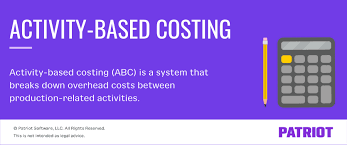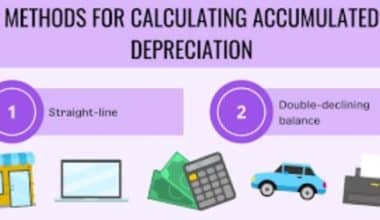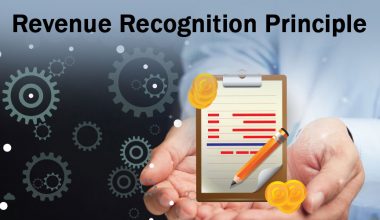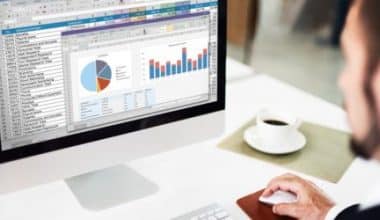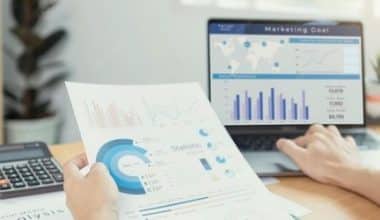In the world of accounting, assets are the economic resources owned by an individual or business. Assets can be tangible or intangible and can be used to generate income or meet obligations. Asset accounting is the process of tracking and recording the value of these assets. This article will provide an overview of assets accounting, both list and fixed, including asset types, asset accounting examples, and the benefits and drawbacks associated with it.
What is Assets Accounting?
Assets accounting is the process of tracking and recording the value of an individual’s or business’s assets. Assets are the economic resources owned by an individual or business, such as cash, investments, property, and equipment. Also, Assets can be tangible or intangible and can be used to generate income or to meet obligations.
When it comes to assets accounting, it is important to ensure that assets are accurately and properly recorded. This ensures that the individual or business can properly assess the value of their assets, which is essential for proper financial planning. Asset accounting also helps ensure that assets are correctly classified, which is important for taxation and reporting purposes.
What Is Considered an Asset?
Assets can be either tangible or intangible and can be used to generate income or to meet obligations. The most common types of assets are cash, investments, property, and equipment. Other types of assets may include inventory, accounts receivable, patents, copyrights, trademarks, and goodwill.
Types of Assets Accounting
There are three main types of assets accounting: fixed, current, and list assets accounting.
#1. Fixed Assets Accounting
Fixed assets accounting is the process of tracking and recording the value of an individual’s or business’s fixed assets. Also, fixed assets are assets that have a fixed value, such as property, equipment, and vehicles. Furthermore, fixed assets accounting helps to ensure that these assets are properly recorded and that their value is accurately reflected in the financial statements.
#2. Current Assets Accounting
Current assets accounting is the process of tracking and recording the value of an individual’s or business’s current assets. Also, current assets are assets that have a short-term value, such as cash, investments, inventory, and accounts receivable.
#3. List Assets Accounting
List assets accounting is the process of tracking and recording the value of an individual’s or business’s list of assets. Furthermore, list assets are assets that cannot be converted into cash, such as patents, copyrights, trademarks, and goodwill. List assets accounting helps to ensure that these assets are properly recorded and that their value is accurately reflected in the financial statements.
What are 5 Assets in Accounting?
The five most common assets in accounting are:
- Cash
- Investments
- Property
- Equipment
- Inventory
Benefits of Assets Accounting
Asset accounting can provide numerous benefits to an individual or business, including the following:
- Accurate recording of assets: Assets help to ensure that assets are accurately recorded and that their value is accurately reflected in the financial statements.
- Proper classification of assets: Assets help to ensure that assets are correctly classified, which is important for taxation and reporting purposes.
- Improved financial planning: Assets help to ensure that the individual or business can properly assess the value of their assets, which is essential for proper financial planning.
- Enhanced asset management: Assets help to ensure that assets are properly managed and that their value is maximized.
Fixed Assets Accounting
Fixed assets accounting is the process of tracking and recording the value of an individual’s or business’s fixed assets. They are assets that have a fixed value, such as property, equipment, and vehicles. Also, fixed assets accounting helps to ensure that these assets are properly recorded and that their value is accurately reflected in the financial statements.
When it comes to fixed asset accounting, it is important to ensure that fixed assets are accurately and properly recorded. This includes recording the original purchase price, recording any depreciation or impairment of the asset, and recording any sales or disposals of the asset.
Current Assets Accounting
Current assets accounting is the process of tracking and recording the value of an individual’s or business’s current assets. Also, current assets are assets that have a short-term value, such as cash, investments, inventory, and accounts receivable. Current assets accounting helps to ensure that these assets are properly recorded and that their value is accurately reflected in the financial statements.
When it comes to current asset accounting, it is important to ensure that assets are accurately and properly recorded. This includes recording the purchase price, recording any sales of the asset, recording any losses or gains associated with the asset, and recording any disposals of the asset.
List Assets Accounting
List assets accounting is the process of tracking and recording the value of an individual’s or business’s list of assets. Furthermore, list assets are assets that cannot be converted into cash, such as patents, copyrights, trademarks, and goodwill. List assets accounting helps to ensure that these assets are properly recorded and that their value is accurately reflected in the financial statements.
When it comes to list assets accounting, it is important to ensure that list assets are accurately and properly recorded. This includes recording the purchase price, recording the estimated value of the asset, recording any losses or gains associated with the asset, and recording any disposals of the asset.
Examples of Fixed Assets Accounting
Examples of fixed assets accounting include recording the original purchase price of a building, recording any depreciation of the building, and recording any sales or disposals of the building.
Is Cash an Asset or Liability?
Cash is considered an asset because it can be used to generate income or to meet obligations. However, cash can also be considered a liability if an individual or business has borrowed money and is obligated to repay it.
Examples of Current Assets Accounting
Examples of current assets accounting include recording the purchase price of inventory, recording any sales of the inventory, recording any losses or gains associated with the inventory, and recording any disposals of the inventory.
Advantages of Assets Accounting
The advantages of asset accounting include accurate recording of assets, proper classification of assets, improved financial planning, and enhanced asset management.
Disadvantages of Assets Accounting
The disadvantages of asset accounting include the need for accurate and timely data, the need for detailed records, and the need for skilled personnel to perform asset accounting tasks.
Examples of List Assets Accounting
Examples of list asset accounting include recording the purchase price of a patent, recording the estimated value of the patent, recording any losses or gains associated with the patent, and recording any disposals of the patent.
What are Examples of Liabilities?
Examples of liabilities include accounts payable, taxes payable, wages payable, loans payable, and any other debts that an individual or business is obligated to pay.
What is Debit in Accounting?
In accounting, “debit” is an entry on the left-hand side of an account that increases the value of the account. It is the opposite of “credit,” which is an entry on the right-hand side of an account that decreases the value of the account.
Examples of Assets Accounting
Examples of asset accounting include recording the purchase price of a building, the purchase price of inventory, the purchase price of a patent, and any losses or gains associated with any of the asset.
Which Is an Equity Account?
An equity account is an account that is used to track the ownership interest of an individual or business. Common examples of equity accounts include common stock, retained earnings, and capital surplus.
How to Create an Effective Assets System
Creating an effective assets system is essential for any individual or business that wants to accurately track and record the value of their assets. An effective asset accounting system should include the following steps:
- Set up a separate account for each asset.
- Record all transactions related to the asset.
- Monitor the asset’s performance.
- Track the asset’s value over time.
- Adjust the asset’s value for inflation.
Liabilities vs. Assets
Understanding the distinction between assets and liabilities is crucial. On a balance sheet, a company lists its assets, liabilities, and equity. Assets are resources that a company owns or controls that are expected to provide future economic worth. Liabilities are what a company owes to others, such as outstanding invoices to suppliers, employee wages and benefits, lease payments, mortgages, taxes, and loans.
To be clear, leased property and equipment are reported on the balance sheet as both an asset (Right of Use) and a liability for public firms (the present value of future lease payments). Under US GAAP, private corporations may soon be forced to do the same.
The value that would be restored to the owners or shareholders if all assets were sold and all debts were settled is referred to as equity. The “accounting equation,” one of the basic concepts of accounting, defines the connection between assets, liabilities, and equity:
Liabilities + Shareholders’ Equity = Assets
A company that has more assets than liabilities is said to have positive equity or shareholder value. If a company’s assets are less than its liabilities, it has negative equity or owes more than it is worth.
Three Key Properties of Assets
An asset must have three characteristics to be deemed an asset:
Ownership: To start, a company must own or control the asset. This allows the company to transform the asset into cash or a cash equivalent while limiting the item’s control over others. It should be noted that right-of-use assets are not always convertible. Lease contracts frequently state that the lease cannot be transferred or sold.
When comparing an asset’s informal and technical meanings, the ownership property is important. They, for example, frequently claim that their staff is their “most valuable asset,” although, in terms of accounting, companies have little control over them—people can quickly quit for a new job.
Economic value: A second requirement is that an asset provides economic value. Except for some right-of-use assets such as leasing agreements, all assets can be sold or converted to cash. As a result, assets can be leveraged to assist production and business expansion.
Resource: Finally, an asset must be a resource, which indicates that it has or has the potential to generate future economic value. This often signifies that the asset has the potential to generate future positive cash inflows.
Automated Asset Management Solutions
Keeping track of assets can be difficult considering the number and variety of assets that a firm may own. Inventory, categorize, and track assets with automated asset management solutions to better understand their worth and plan operations. Asset management tools can also assist in tracking and planning an asset’s operational life cycle, from acquisition to disposal, including managing and maintaining the asset. Furthermore, automated asset management solutions can assist a company in complying with changing government or industry laws.
A company’s assets encompass practically everything it owns and controls that have monetary value and will generate future benefits. Assets are classed according to how quickly they may be converted to cash, whether they are tangible or intangible, and how they are used by a firm. Assets are a significant component of a company’s net worth and a factor in its overall financial health.
Conclusion
Asset accounting is the process of tracking and recording the value of an individual’s or business’s assets. Assets can be either tangible or intangible and can be used to generate income or meet obligations.
Creating an effective asset system is essential for any individual or business that wants to accurately track and record the value of their assets. An effective asset accounting system should include setting up separate accounts for each asset, recording all transactions related to the asset, monitoring the asset’s performance, tracking the asset’s value over time, and adjusting the asset’s value for inflation.
Overall, assets can be an essential tool for any individual or business that wants to track and record the value of their assets. With an effective assets system in place, an individual or business can ensure that their assets are accurately recorded and that their value is accurately reflected in the financial statements.
Related Articles
- WHAT ARE ASSETS AND LIABILITIES: Definition, Differences and Examples
- CASH ACCOUNTING: Meaning, Examples, Merits, and Demerits
- Fund Accounting: Definition, Basics, Salary, Jobs (+Quick Guide)
- ACCRUAL ACCOUNTING: A SIMPLIFIED GUIDE FOR BEGINNERS (+Detailed examples)


